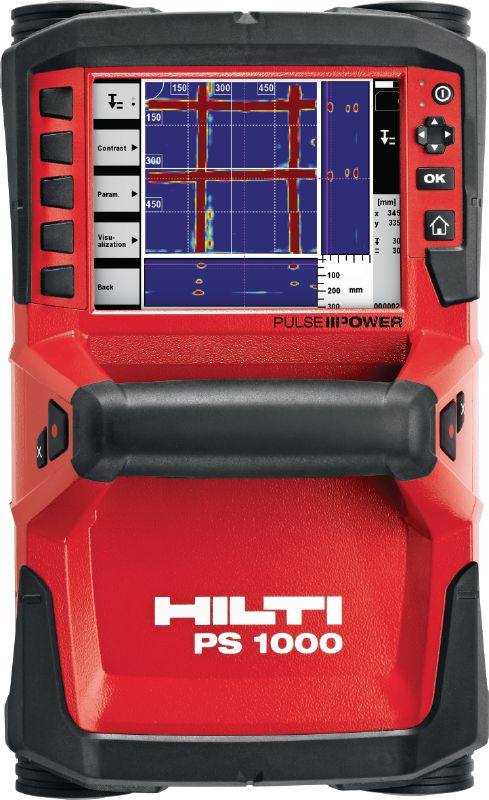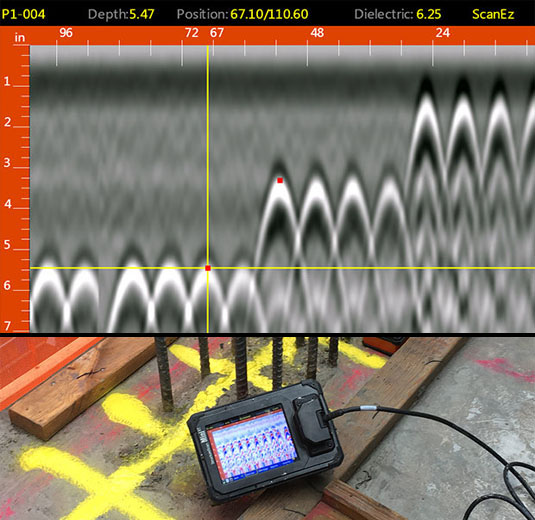RainierGPR Service Areas: Specialist Concrete Scanning in Your Region
RainierGPR Service Areas: Specialist Concrete Scanning in Your Region
Blog Article
Concrete Scanning: A Critical Action Towards Making Sure Structural Integrity and Safety
In the world of building and construction and framework maintenance, the importance of concrete scanning can not be overstated. This meticulous process holds the essential to unveiling potential risks concealed under the surface of relatively strong frameworks. By employing advanced innovation and methodologies, concrete scanning functions as an essential device in making certain that the stability and security of bridges and buildings are maintained to the highest requirements. Nonetheless, beyond its surface-level effects, the role of concrete scanning prolongs much much deeper than fulfills the eye.
Value of Concrete Scanning
Concrete scanning plays a critical role in ensuring the structural integrity and safety and security of buildings and framework tasks. By using advanced innovations such as ground-penetrating radar (GPR) and electro-magnetic induction, professionals can non-destructively check concrete structures to find prospective flaws, gaps, embedded objects, and reinforcement design. This procedure makes it possible for early discovery of abnormalities that could jeopardize the security of a structure, avoiding expensive damages and guaranteeing the safety of owners.
Before drilling, cutting, or coring into concrete, scanning helps recognize the exact places of rebar, post-tension cables, and various other ingrained aspects, minimizing the danger of unexpected hits that might lead to structural weak points. Furthermore, concrete scanning aids in high quality control by verifying the thickness of concrete covers and spotting any kind of disparities that may impact the total durability of the framework.
Technology for Concrete Assessment

Advantages of Early Detection
Timely detection of structural concerns can dramatically alleviate threats and make certain the durability of construction tasks. By identifying possible troubles beforehand in the building and construction process, stakeholders can take proactive procedures to resolve concerns prior to they rise into bigger and a lot more expensive issues. One of the key advantages of very early detection is the prevention of structural failings, which can posture severe safety risks and cause job hold-ups and economic losses.
In addition, very early detection enables timely repairs and maintenance, which can help expand the life-span of the structure. By addressing issues quickly, building groups can stay clear of expensive repairs or perhaps the need for premature substitute of architectural parts. This proactive strategy not only conserves money and time but likewise improves the overall safety and security and resilience of the construction job.
Furthermore, early discovery can boost task preparation try here and decision-making by supplying stakeholders with useful insights into the problem of the framework. Armed with this information, job supervisors can make enlightened choices relating to construction timelines, techniques, and products, bring about more successful and reliable job outcomes.
Guaranteeing Architectural Stability
Guaranteeing the structural stability of a building project is extremely important to its security and durability. Architectural stability refers to the ability of a building or facilities to keep its type and feature under ecological conditions and numerous loads. To accomplish this, thorough analysis and surveillance of the structure are essential. Concrete scanning plays an essential role in making sure structural security by identifying possible concerns such as gaps, delamination, or reinforcement rust that might compromise the integrity of the structure with time.
By utilizing innovative scanning modern technologies like ground-penetrating radar (GPR) and electro-magnetic induction, building and construction experts can non-invasively examine concrete structures to identify locations of worry below the surface area. This proactive method permits the early detection of weak points or defects, enabling prompt repair services or support to stop architectural failures.
Normal concrete scanning during different construction stages and throughout the life cycle of a framework can help keep its stability, alleviate risks, and guarantee the safety of occupants. By prioritizing structural stability through concrete scanning, construction projects can boost their strength and sturdiness, ultimately adding to higher safety and security and long life.

Avoiding Essential Failures
Implementing routine inspections, such as concrete scanning, can see here disclose concealed issues like spaces, cracks, or corrosion that might compromise the integrity of a framework. By utilizing innovative scanning innovations like Ground Penetrating Radar (GPR) or Concrete X-ray, engineers can non-destructively examine the condition of concrete and identify weak points that call for support or repair service.

Conclusion
In conclusion, concrete scanning plays a critical duty in guaranteeing architectural honesty and safety and security by using sophisticated innovation for very early detection of prospective problems. This proactive strategy aids avoid essential failures and ensures the stability of frameworks. It is crucial to focus on concrete evaluation as a standard method over at this website to secure the durability and safety of structures and framework.
Concrete scanning plays a critical duty in guaranteeing the architectural stability and safety and security of buildings and framework projects. Additionally, concrete scanning aids in quality control by confirming the thickness of concrete covers and finding any type of disparities that might influence the overall toughness of the structure. Concrete scanning plays a crucial role in guaranteeing structural security by identifying prospective problems such as gaps, delamination, or support rust that could endanger the integrity of the structure over time.

In conclusion, concrete scanning plays a vital duty in guaranteeing structural honesty and safety and security by making use of advanced innovation for early discovery of possible problems.
Report this page